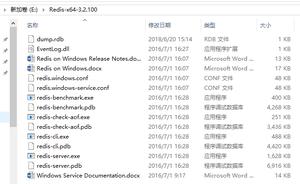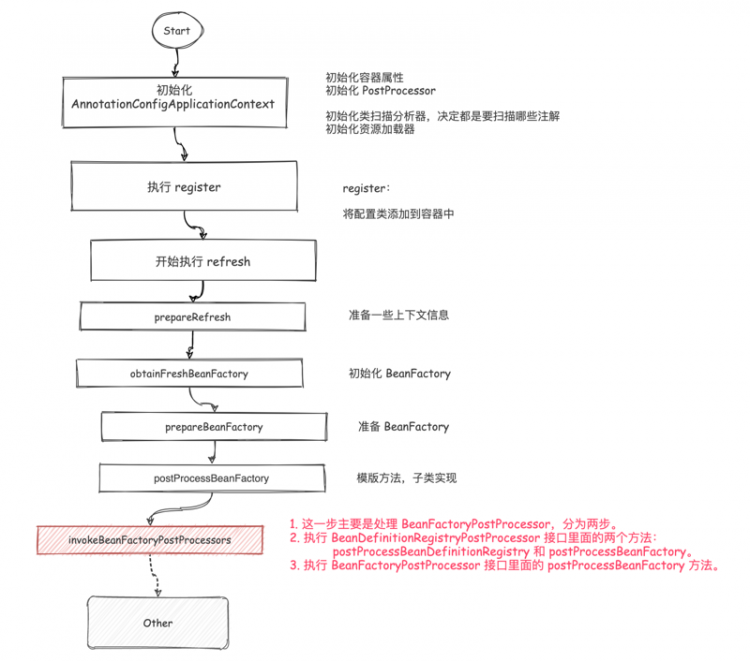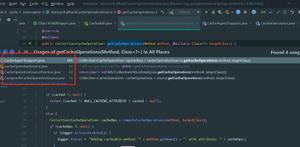Spring学习笔记——Spring依赖注入原理分析
本文内容纲要:Spring学习笔记——Spring依赖注入原理分析
我们知道Spring的依赖注入有四种方式,各自是get/set方法注入、构造器注入、静态工厂方法注入、实例工厂方法注入
以下我们先分析下这几种注入方式
1、get/set方法注入
public class SpringAction { //注入对象springDao
private SpringDao springDao;
//一定要写被注入对象的set方法
public void setSpringDao(SpringDao springDao) {
this.springDao = springDao;
}
public void ok(){
springDao.ok();
}
}
配置文件例如以下:
<!--配置bean,配置后该类由spring管理--> <bean name="springAction" class="com.bless.springdemo.action.SpringAction">
<!--(1)依赖注入,配置当前类中相应的属性-->
<property name="springDao" ref="springDao"></property>
</bean>
<bean name="springDao" class="com.bless.springdemo.dao.impl.SpringDaoImpl"></bean>
2、构造器注入
public class SpringAction { //注入对象springDao
private SpringDao springDao;
private User user;
public SpringAction(SpringDao springDao,User user){
this.springDao = springDao;
this.user = user;
System.out.println("构造方法调用springDao和user");
}
public void save(){
springDao.save(user);
}
}
在XML文件里相同不用的形式,而是使用标签,ref属性相同指向其他标签的name属性:
<!--配置bean,配置后该类由spring管理--> <bean name="springAction" class="com.bless.springdemo.action.SpringAction">
<!--(2)创建构造器注入,假设主类有带參的构造方法则需加入此配置-->
<constructor-arg ref="springDao"></constructor-arg>
<constructor-arg ref="user"></constructor-arg>
</bean>
<bean name="springDao" class="com.bless.springdemo.dao.impl.SpringDaoImpl"></bean>
<bean name="user" class="com.bless.springdemo.vo.User"></bean>
在XML文件里相同不用的形式,而是使用标签。ref属性相同指向其他标签的name属性:
解决构造方法參数的不确定性。你可能会遇到构造方法传入的两參数都是同类型的,为了分清哪个该赋相应值,则须要进行一些小处理:
<bean name="springAction" class="com.bless.springdemo.action.SpringAction"> <constructor-arg index="0" ref="springDao"></constructor-arg>
<constructor-arg index="1" ref="user"></constructor-arg>
</bean>
还有一种是设置參数类型:
<constructor-arg type="java.lang.String" ref=""/>3、静态工厂方法注入
通过调用静态工厂方法来获取自己须要的对象,为了让Spring管理全部对象,我们不能直接通过类名加方法来获取对象,那样就脱离了Spring的管理,而是通过Spring注入的形式来获取
package com.bless.springdemo.factory;import com.bless.springdemo.dao.FactoryDao;
import com.bless.springdemo.dao.impl.FactoryDaoImpl;
import com.bless.springdemo.dao.impl.StaticFacotryDaoImpl;
public class DaoFactory {
//静态工厂
public static final FactoryDao getStaticFactoryDaoImpl(){
return new StaticFacotryDaoImpl();
}
}
相同看关键类,这里我须要注入一个FactoryDao对象,这里看起来跟第一种注入一模一样。可是看随后的xml会发现有非常大区别:
public class SpringAction { //注入对象
private FactoryDao staticFactoryDao;
public void staticFactoryOk(){
staticFactoryDao.saveFactory();
}
//注入对象的set方法
public void setStaticFactoryDao(FactoryDao staticFactoryDao) {
this.staticFactoryDao = staticFactoryDao;
}
}
配置文件例如以下:
<!--配置bean,配置后该类由spring管理--> <bean name="springAction" class="com.bless.springdemo.action.SpringAction" >
<!--(3)使用静态工厂的方法注入对象,相应以下的配置文件(3)-->
<property name="staticFactoryDao" ref="staticFactoryDao"></property>
</property>
</bean>
<!--(3)此处获取对象的方式是从工厂类中获取静态方法-->
<bean name="staticFactoryDao" class="com.bless.springdemo.factory.DaoFactory" factory-method="getStaticFactoryDaoImpl"></bean>
4、实例工厂方法注入
实例工厂的意思是获取对象实例的方法不是静态的,所以你须要首先new工厂类。再调用普通的实例方法:
public class DaoFactory { //实例工厂
public FactoryDao getFactoryDaoImpl(){
return new FactoryDaoImpl();
}
}
public class SpringAction {
//注入对象
private FactoryDao factoryDao;
public void factoryOk(){
factoryDao.saveFactory();
}
public void setFactoryDao(FactoryDao factoryDao) {
this.factoryDao = factoryDao;
}
}
<!--配置bean,配置后该类由spring管理-->
<bean name="springAction" class="com.bless.springdemo.action.SpringAction">
<!--(4)使用实例工厂的方法注入对象,相应以下的配置文件(4)-->
<property name="factoryDao" ref="factoryDao"></property>
</bean>
<!--(4)此处获取对象的方式是从工厂类中获取实例方法-->
<bean name="daoFactory" class="com.bless.springdemo.factory.DaoFactory"></bean>
<bean name="factoryDao" factory-bean="daoFactory" factory-method="getFactoryDaoImpl"></bean>
对于第1、2种我们用的比較多,对后两种可能比較陌生。
以下我们来分析下Spring是怎样完毕依赖注入的。假设我们去看Spring的源代码可能涉及的类和接口相当多,不易掌握。在此我用自己的代码和方式来帮助我们Spring依赖注入的过程。
当我们启动Spring容器的时候他会运行以下几个过程:
1、载入Xml配置文件(readXML(String filename))在Spring这个由ApplicationContext类完毕
这一步会解析Xml属性。把bean的属性存放到BeanDefinition类中
代码例如以下:
/** * 读取xml配置文件
* @param filename
*/
private void readXML(String filename) {
SAXReader saxReader = new SAXReader();
Document document=null;
try{
URL xmlpath = this.getClass().getClassLoader().getResource(filename);
document = saxReader.read(xmlpath);
Map<String,String> nsMap = new HashMap<String,String>();
nsMap.put("ns","http://www.springframework.org/schema/beans");//加入命名空间
XPath xsub = document.createXPath("//ns:beans/ns:bean");//创建beans/bean查询路径
xsub.setNamespaceURIs(nsMap);//设置命名空间
List<Element> beans = xsub.selectNodes(document);//获取文档下全部bean节点
for(Element element: beans){
String id = element.attributeValue("id");//获取id属性值
String clazz = element.attributeValue("class"); //获取class属性值
BeanDefinition beanDefine = new BeanDefinition(id, clazz);
XPath propertysub = element.createXPath("ns:property");
propertysub.setNamespaceURIs(nsMap);//设置命名空间
List<Element> propertys = propertysub.selectNodes(element);
for(Element property : propertys){
String propertyName = property.attributeValue("name");
String propertyref = property.attributeValue("ref");
PropertyDefinition propertyDefinition = new PropertyDefinition(propertyName, propertyref);
beanDefine.getPropertys().add(propertyDefinition);
}
beanDefines.add(beanDefine);
}
}catch(Exception e){
e.printStackTrace();
}
}
2、Bean的实例化
在配置文件以bean的id为key。BeanDefinition为value放到Map中
/** * 完毕bean的实例化
*/
private void instanceBeans() {
for(BeanDefinition beanDefinition : beanDefines){
try {
if(beanDefinition.getClassName()!=null && !"".equals(beanDefinition.getClassName().trim()))
sigletons.put(beanDefinition.getId(), Class.forName(beanDefinition.getClassName()).newInstance());
} catch (Exception e) {
e.printStackTrace();
}
}
}
3、为Bean的输入注入值。完毕依赖注入
/** * 为bean对象的属性注入值
*/
private void injectObject() {
for(BeanDefinition beanDefinition : beanDefines){
Object bean = sigletons.get(beanDefinition.getId());
if(bean!=null){
try {
PropertyDescriptor[] ps = Introspector.getBeanInfo(bean.getClass()).getPropertyDescriptors();
for(PropertyDefinition propertyDefinition : beanDefinition.getPropertys()){
for(PropertyDescriptor properdesc : ps){
if(propertyDefinition.getName().equals(properdesc.getName())){
Method setter = properdesc.getWriteMethod();//获取属性的setter方法 ,private
if(setter!=null){
Object value = sigletons.get(propertyDefinition.getRef());
setter.setAccessible(true);
setter.invoke(bean, value);//把引用对象注入到属性
}
break;
}
}
}
} catch (Exception e) {
}
}
}
}
事实上Spring依赖注入的过程就是这么简单,再就是各种细节了。比方懒载入、单例等的额外处理了。
本文内容总结:Spring学习笔记——Spring依赖注入原理分析
原文链接:https://www.cnblogs.com/mthoutai/p/7278427.html
以上是 Spring学习笔记——Spring依赖注入原理分析 的全部内容, 来源链接: utcz.com/z/362606.html









